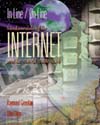

 Inline/Online: Fundamentals of the Internet and the World Wide Web, 2/e Multimedia Chapter 13 Learning ObjectivesWeb pages can be very exciting and dynamic with the inclusion of multi-media, which encompasses animation, audio (sound), graphics - both two-dimensional (2D) and three-dimensional (3D) images - text, and video1 (silent or with sound). Any combination of these media can be specified in HTML documents. Of course, a typical Web page contains in-line images and text, but more and more Web pages are using other types of media as well. Since we have already addressed image formats, simple animations, and text, this chapter will focus on audio, 3D images, and video. In many ways, multimedia is still in its infancy and is one of the most complex and rapidly changing areas on the Web. There are entire books devoted to this subject. A number of these can be traced through the refer-ences. The goal of this chapter is to provide you with a brief glimpse into multimedia topics so that you can have a good starting point for pursuing areas that interest you in more detail. It is important not to go overboard by displaying too much multimedia content. If you decide to include a multimedia item, it should have a value to the average reader of your Web page. We will cover the following relevant topics:
|
 2002 McGraw-Hill Higher Education
2002 McGraw-Hill Higher EducationAny use is subject to the Terms of Use and Privacy Policy.
McGraw-Hill Higher Education is one of the many fine businesses of The McGraw-Hill Companies.